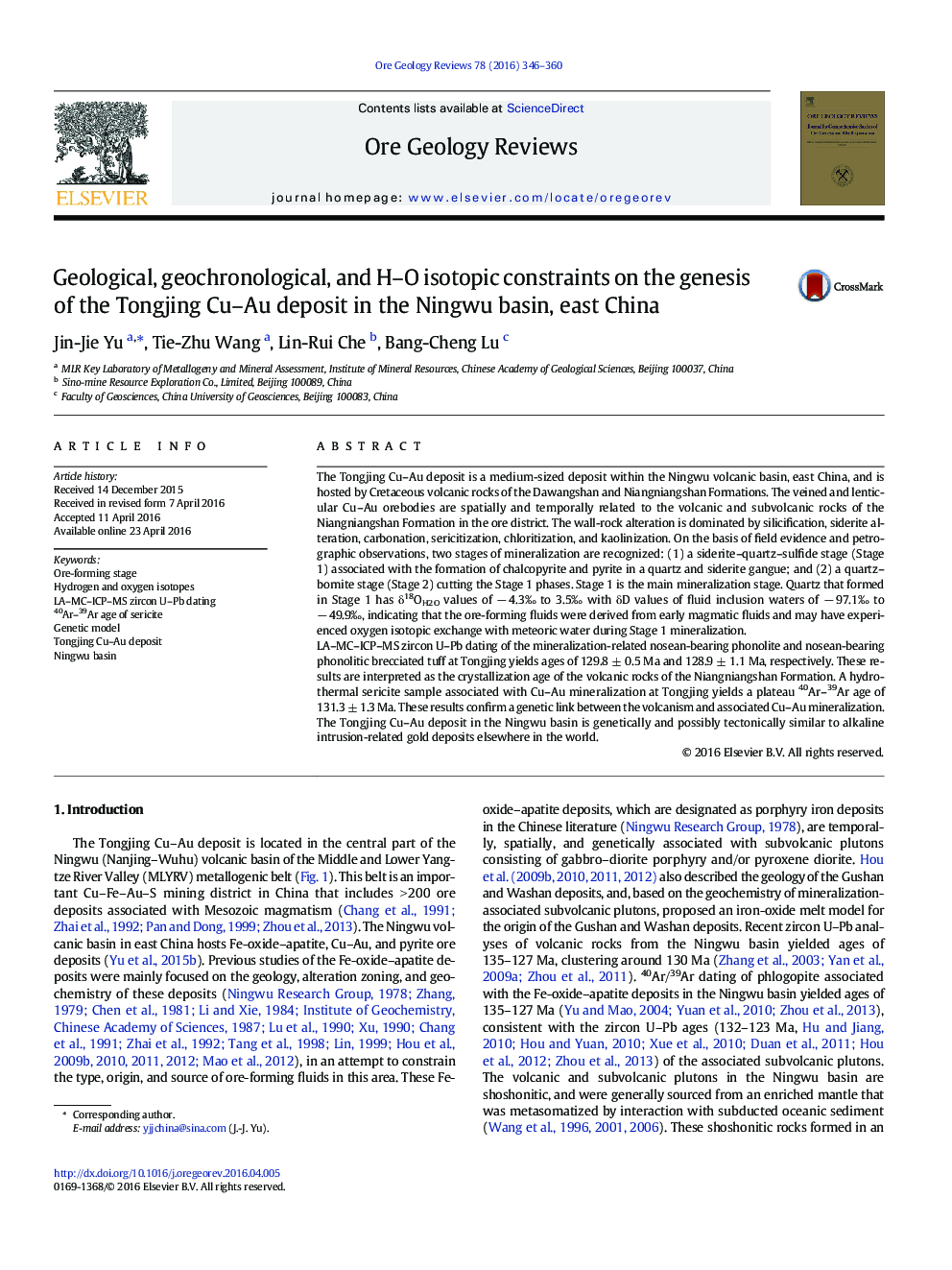| کد مقاله | کد نشریه | سال انتشار | مقاله انگلیسی | نسخه تمام متن |
|---|---|---|---|---|
| 4696855 | 1637228 | 2016 | 15 صفحه PDF | دانلود رایگان |

• Two stages of mineralization are recognized.
• The ore-forming fluids were derived from magmatic fluids during Stage 1 mineralization.
• Zircon U–Pb ages of the mineralization-related volcanic rocks are 129 to 130 Ma. A hydrothermal sericite sample yields a plateau 40Ar–39Ar age of 131.3 ± 1.3 Ma.
• There is a genetic link between the alkaline volcanism and associated Cu–Au mineralization.
• The Tongjing deposit is genetically and possibly tectonically similar to other alkaline intrusion-related gold deposits.
The Tongjing Cu–Au deposit is a medium-sized deposit within the Ningwu volcanic basin, east China, and is hosted by Cretaceous volcanic rocks of the Dawangshan and Niangniangshan Formations. The veined and lenticular Cu–Au orebodies are spatially and temporally related to the volcanic and subvolcanic rocks of the Niangniangshan Formation in the ore district. The wall-rock alteration is dominated by silicification, siderite alteration, carbonation, sericitization, chloritization, and kaolinization. On the basis of field evidence and petrographic observations, two stages of mineralization are recognized: (1) a siderite–quartz–sulfide stage (Stage 1) associated with the formation of chalcopyrite and pyrite in a quartz and siderite gangue; and (2) a quartz–bornite stage (Stage 2) cutting the Stage 1 phases. Stage 1 is the main mineralization stage. Quartz that formed in Stage 1 has δ18OH2O values of − 4.3‰ to 3.5‰ with δD values of fluid inclusion waters of − 97.1‰ to − 49.9‰, indicating that the ore-forming fluids were derived from early magmatic fluids and may have experienced oxygen isotopic exchange with meteoric water during Stage 1 mineralization.LA–MC–ICP–MS zircon U–Pb dating of the mineralization-related nosean-bearing phonolite and nosean-bearing phonolitic brecciated tuff at Tongjing yields ages of 129.8 ± 0.5 Ma and 128.9 ± 1.1 Ma, respectively. These results are interpreted as the crystallization age of the volcanic rocks of the Niangniangshan Formation. A hydrothermal sericite sample associated with Cu–Au mineralization at Tongjing yields a plateau 40Ar–39Ar age of 131.3 ± 1.3 Ma. These results confirm a genetic link between the volcanism and associated Cu–Au mineralization. The Tongjing Cu–Au deposit in the Ningwu basin is genetically and possibly tectonically similar to alkaline intrusion-related gold deposits elsewhere in the world.
Figure optionsDownload as PowerPoint slide
Journal: Ore Geology Reviews - Volume 78, October 2016, Pages 346–360